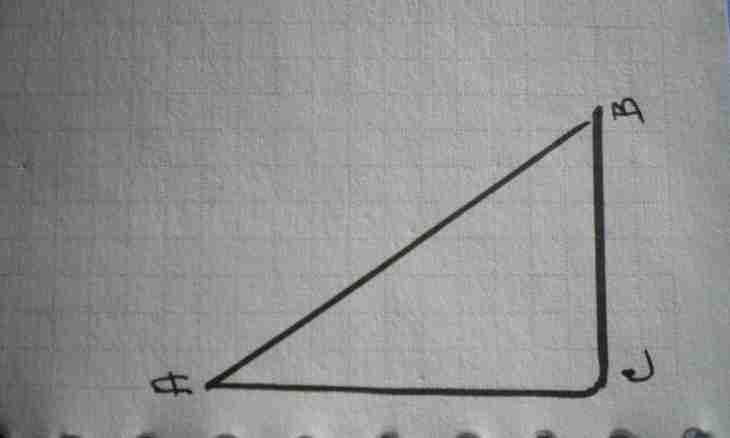The sine is one of basic trigonometrical functions. Originally the formula of its stay was brought out of ratios of lengths of the parties in a rectangular triangle. Are given as these basic options of finding of sine of corners on lengths of the parties of a triangle, and formula for more difficult cases with any triangles below.
Instruction
1. If the considered triangle is rectangular, then it is possible to use basic definition of trigonometrical function of a sine for acute angles. By definition a sine of the angle call a ratio of length of the leg lying opposite to this corner to length of a hypotenuse of this triangle. That is, if legs have length And yes In, and length of a hypotenuse is equal With, then a sine of the angle α, the leg lying opposite And, determine by a formula α = A/S, and a sine of the angle β, the leg lying opposite In - by a formula β = PREMIUM. To find a sine of the third corner in a rectangular triangle there is no need as the corner lying opposite to a hypotenuse always is equal 90 °, and its sine is always equal to unit.
2. For finding of sine of corners in any triangle, oddly enough, it is simpler to use not the theorem of sine, but the theorem of cosines. It says that the squared length of any party is equal to the sum of squares of lengths of two other parties without the doubled work of these lengths on a cosine of the angle between them: And² = In² + C2 - 2*В*С*cos(α). It is possible to bring a formula for finding of a cosine out of this theorem: cos(α)= (In² + With²-and²) / (2*B*C). And as the sum of squares of a sine and cosine of the same corner is always equal to unit, it is possible to remove also a formula for finding of a sine of the angle α: sin(α)= √ (1-(cos(α))²) = √ (1-(In² + With²-and²)² / (2*B*C)²).
3. Use for finding of a sine of the angle two different formulas of calculation of the area of a triangle only lengths of its parties are involved in one of which, and in another - lengths of two parties and a sine of the angle between them. As their results will be equal, from identity it is possible to express a sine of the angle. The formula of finding of the area through lengths of the parties (Heron's formula) looks so: S=¼ * √ ((And + In + C) * (In + S-and) * (And + S-in) * (And + V-c)). And the second formula can be written so: S=А*В*sin(γ). Substitute the first formula in the second and make a formula for the sine of the angle lying opposite to the party With: sin(γ) = ¼ * √ (And B+C) * (In S-and) * (And S-in) * (And V-c) / (VC/)). Sine of two other corners can be found on similar formulas.

